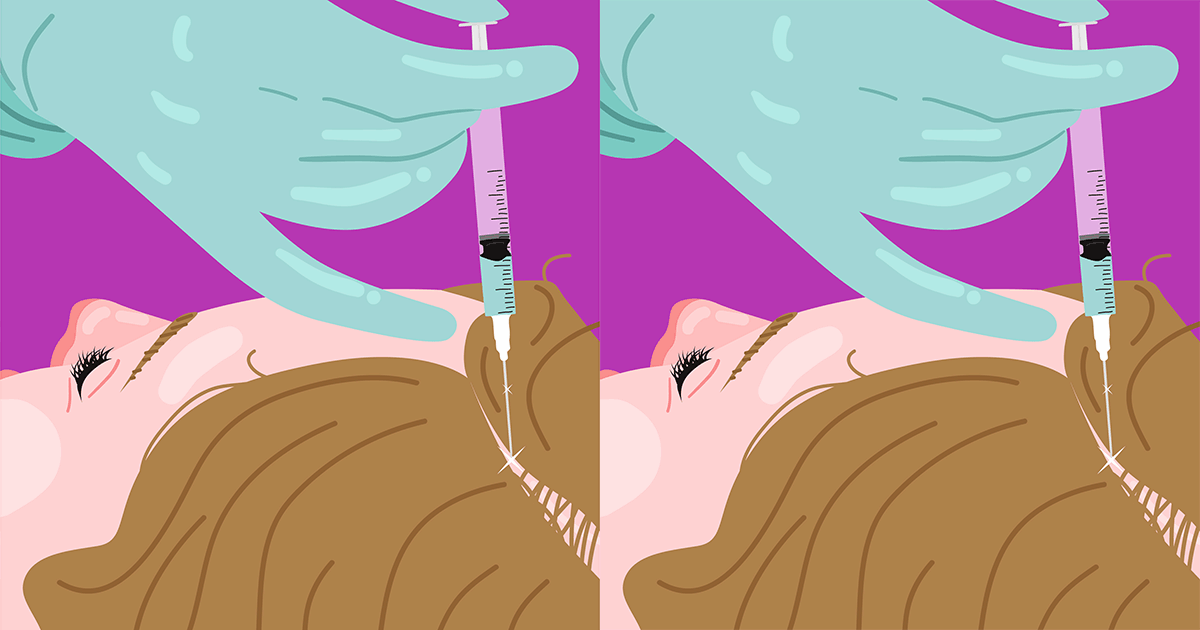
What is platelet-rich fibrin (PRF) treatment?
A platelet-rich fibrin treatment (PRF) uses your body’s own platelets to help repair cells and encourage cell growth. Your blood is made up of many different components, including platelets. Platelets help your blood clot when you get cut, nourish and repair damaged cells, increase cell turnover, foster collagen production, stimulate blood supply, boost stem cell rejuvenation, and stimulate growth factors. Physicians found that they could speed healing of damaged tissues by injecting a patient’s own platelets in damaged tissues.* This treatment is used in knee repairs, wound management, healing chronic diabetic ulcers, severe burn trauma, and cosmetic medical applications.
How does it work for hair loss?
Androgenetic alopecia (AGA) is the most common cause of chronic hair loss, affecting both men and women. In women, hair loss is usually throughout the scalp. In men, hair loss is usually along the front hairline (receding hairline) or balding on the top of the scalp. In AGA, hair follicles start to shrink and die due to lack of blood supply and insufficient nourishment.
PRF helps stimulate hair growth in patients with AGA by increasing blood supply to the hair follicles. The increase in blood supply provides nourishment to hair follicles, which increases follicle diameter and leads to thicker hair shafts. This increased nourishment also stimulates new follicle growth, and thus new hair growth.*
Who benefits the most?
PRF works best in patients with hair loss patterns typical of AGA and in patients that started experiencing hair loss within the last five years. The earlier PRF is started the better the results will be. Patients that have been experiencing hair loss for more than five years or exhibit other types of hair loss might see some improvement in hair growth from PRF.
Oral hormone medications can have undesirable side effects, and topical hormone medications can be messy and difficult to apply. In addition, some patients simply do not respond to hormone hair loss medications. For these reasons, PRF treatments can be a great alternative to medication.
For patients able to tolerate and see results from hormone hair loss medications, using PRF treatments in conjunction has been shown to dramatically enhance hair growth.*
The process
- Blood draw: A few tubes of blood are taken from the patient in a standard blood draw, just like getting bloodwork done during your yearly physical.
- Centrifuge: Those tubes are then taken to the laboratory where they are put into a specialized centrifuge to isolate a layer of cells that are highly rich in platelets. This layer of cells is extracted to create your own PRF treatment solution.
- Injection: Your PRF is then injected into your scalp at the level of the hair follicles, about every half inch over the entire area of thinning hair. The injection process takes about 30 minutes.
- Repeat: Treatments are typically performed once a month for three to four months. Most patients start to see results in 4 to 6 months and elect to repeat treatment 1 to 2 times a year after the initial treatment series to maintain their hair growth. Your physician might also prescribe topical or oral medications, such as finasteride, red light therapy, or minoxidil, to use in conjunction with PRF treatments. Studies have demonstrated faster and more marked improvements in hair growth when both PRF and pharmaceutical treatments are used in combination.
Risks and concerns
PRF treatments are very safe, in part because the treatment relies on your own cells, so there is very little risk of adverse reactions. There is very little to no discomfort during the procedure itself. However, if you are very averse to needles, numbing agents are available upon request. After the injection process, you might experience minor discomfort and bruising at the injection sites. This is normal and should resolve within a week or two. As with all medical treatments, it is important to report all medications, supplements, and herbs that you take to your physician before you are treated. It is also important to tell your physician about any allergies that you have.
Contact us
Are you in the San Francisco Bay Area? Book an appointment with one of our skilled physicians to learn more and develop a treatment plan that is right for your goals, budget, and timeframe. You can book online or call us at 415-409-3456.
Botox is a registered trademark of Allergan, Inc.

